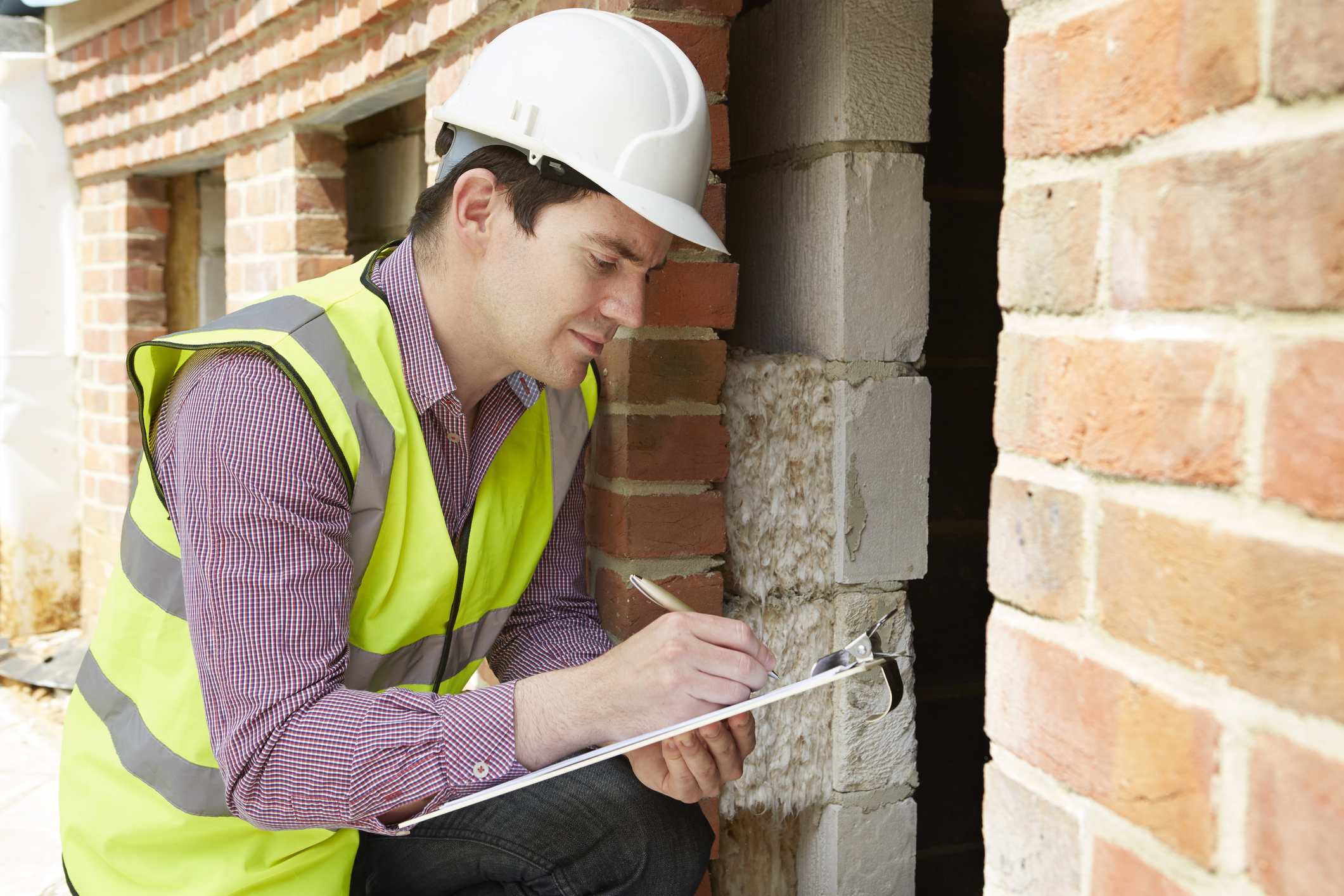Around one third of all the heat lost in an uninsulated home escapes through the walls, so it’s a good place to start. By properly insulating your walls, you will save energy and cut costs off your heating bill.
If you want to keep your energy bills low and reduce your carbon emissions, installing insulation is one of the best ways to keep the heat in your home, and the cold out.
From quick fixes to professional installations, we take a look at everything you need to know about insulating your home.
Start with the walls
First, you need to work out your wall type. Most homes will either have cavity walls or solid walls. Cavity walls usually have an even pattern, with all the bricks laid lengthways.
If your home has solid walls, the bricks will have an alternating pattern, with some bricks laid across the wall so you can see the smaller ends from the outside.
Cavity walls can be insulated by a professional, who will inject insulation material into the cavity – or space – in the wall. A specialist will drill holes in the outside walls, inject insulation through the holes and then seal them with cement.
Solid walls can be insulated from the inside or outside of your home.
Internal wall insulation is done by fitting rigid insulation boards to the wall, or by building a stud wall filled in with insulation material. External wall insulation involves fixing a layer of insulation material to the wall, then covering it with plasterwork or cladding.
Costs, savings and installation
The costs and savings associated with insulating your walls will vary depending on your wall type and house size. Internal solid wall insulation for a semi-detached house, for example, will cost around £8,200 to install, but could save you around £255 a year on your energy bills.
We have more information on costs and savings for solid wall insulation and cavity wall insulation.
If you decide to insulate your walls, make sure you get at least three quotes from different installers. We recommend that your installer is a member of one of the following organisations:
- National Insulation Association (NIA)
- Cavity Insulation Guarantee Agency (CIGA)
- British Board of Agrément (BBA)
You should also check that the installation is covered by an appropriate 25-year guarantee. For solid walls, your installer may be a member of the SWIGA guarantee scheme; for cavity walls, they should have a CIGA guarantee. Alternatively, your installer may offer an independent insurance-backed guarantee.

Look up to the roof…
Just as we lose heat from the top of our heads, an uninsulated house could be losing up to 25% of its heat through the roof. Insulating your loft, attic or roof is a simple and effective way to limit heat loss and reduce your heating bills.
If your loft is easy to access and doesn’t have damp or condensation, it should be easy to insulate – and if you fancy yourself as a DIYer, it’s possible to do it yourself.
Use rolls of mineral wool insulation and lay the first layer between the joists – the horizontal beams that make up the floor of the loft. Another layer is then laid at right angles to cover the joists and make up the insulation to the required depth.
There are several things to consider when installing loft insulation – including storage space, inaccessible areas and damp – so read our guide to installing roof and loft insulation before you start.
Costs and savings vary, depending on the level of insulation you install and the size of your home. But as an example, if you live in a semi-detached house and install up to 270mm of insulation at a cost of £300, you could save around £165 a year on your energy bills and reduce your carbon footprint by around 580kg a year.

…and down to the floor
Insulating your ground floor if you live in a house, bungalow or ground floor flat is another great way to keep your property warm. Usually, you only need to insulate the ground floor – so if you live on an upper floor, you don’t need to insulate your floor space.
First you need to work out what type of floor you have. Many newer homes will have a ground floor made of concrete. This can be insulated when it needs to be replaced, or you can add rigid insulation boards on top.
Older homes are more likely to have suspended timber – or wooden – floors. Timber floors can be insulated by lifting the floorboards and laying down mineral wool insulation, supporting it with netting laid between the joists.
Insulating under the floorboards could save you around £50 a year by preventing the heat from escaping through the ground. Find out more in our guide to floor insulation.
If you’re looking for a quick fix, you can seal the gaps between floors and skirting boards to reduce draughts yourself, using a tube of sealant bought from any DIY store. We have more information on draught-proofing floors, windows and doors.
Rugs and carpets can also help your feet feel warmer, which might mean you don’t feel the need to put the heating on as often during the colder months.

Don’t forget those pipes
It can be easy to forget the small things, but insulating your water tank, pipes and radiators is a quick, easy and affordable way to save money on your energy bills.
A hot water cylinder jacket costs around £15 from a DIY store and should be easy to fit by following the manufacturer’s instructions. Pipe insulation is also relatively cheap and can be as simple as choosing the correct size from your local store and slipping it around the hot water pipes.
If you’re trying to save money on your heating bills and reduce your energy consumption, radiator reflector panels are another good, low-cost option.
These panels are fixed behind your radiators to reflect heat from the radiator back into the room, instead of letting the heat out through an external wall. Remember, you only need to put reflector panels behind radiators on external walls.
Costs and savings for these types of insulation will vary depending on the size of your hot water tank, number of radiators and length of pipes. In a gas-heated semi-detached house in Great Britain, for example, you could save around £90 a year by adding up to 80mm insulation on an uninsulated hot water tank – reducing your carbon emissions by 455kg annually.
We have more advice on insulating tanks, pipes and radiators.
Related posts
How to tackle insulation problems
If you are faced with damp problems due to a botched insulation installation job, what can you do about it?
BlogStay warm in winter: five areas to add insulation in your home
We look at five areas to add insulation in your home, which could help keep the heat in, lower your carbon emissions,…
Blog10 ways to save energy this winter
We’ve put together some cold weather energy saving tips to help people reduce the amount of energy they use at home.